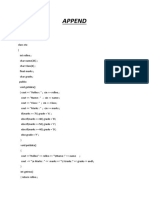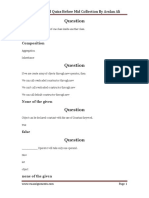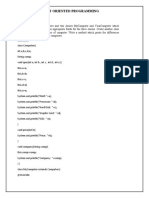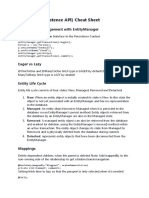0% found this document useful (0 votes)
21 views5 pagesPython Notes PDF
This document provides comprehensive notes on Python programming, covering topics from basic syntax and data types to advanced concepts like decorators and generators. It includes examples for each topic, such as functions, loops, and file handling, along with an overview of popular libraries like NumPy, Pandas, and Matplotlib. The notes serve as a complete guide for learning Python from the ground up.
Uploaded by
aishwaryatsgowda02Copyright
© © All Rights Reserved
We take content rights seriously. If you suspect this is your content, claim it here.
Available Formats
Download as PDF, TXT or read online on Scribd
0% found this document useful (0 votes)
21 views5 pagesPython Notes PDF
This document provides comprehensive notes on Python programming, covering topics from basic syntax and data types to advanced concepts like decorators and generators. It includes examples for each topic, such as functions, loops, and file handling, along with an overview of popular libraries like NumPy, Pandas, and Matplotlib. The notes serve as a complete guide for learning Python from the ground up.
Uploaded by
aishwaryatsgowda02Copyright
© © All Rights Reserved
We take content rights seriously. If you suspect this is your content, claim it here.
Available Formats
Download as PDF, TXT or read online on Scribd
/ 5































































































